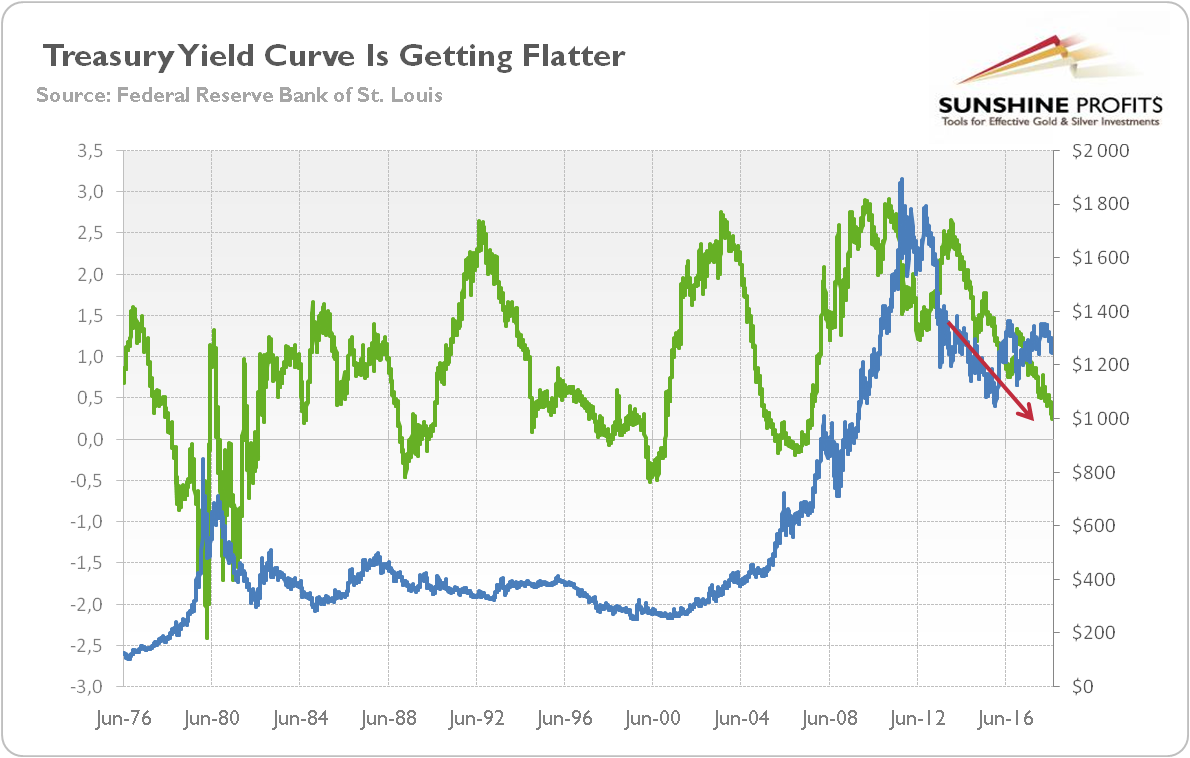One of the hottest issues among economists and financial analysts is the yield curve. Investors worry that it is likely to invert soon, bringing the current expansion to an end. And even the FOMC member discussed “what a flattening of the yield curve might signal about economic activity going forward” in their meeting in June. Are these fears – or gold bulls’ hopes – justified?
We have covered this topic many times (see this and this article), but as our Readers are interested in the matter, we are returning to it to provide some fresh thoughts. Let’s analyze the chart below. It shows the yield curve, calculated as the spread between 10-Year and 2-Year Treasury yields. As one can see, the yield curve has steadily narrowed since 2014. It has already declined below 0.3 percent, the narrowest level since summer 2007.
Chart 1: Yield curve (green line, left axis, spread between 10-year and 2-year Treasury yields) and the price of gold (blue line, right axis, in $) from June 1976 to July 2018.

Why is that? Well, when the yield curve gets flatter, it means that the difference between long-term and short-term rates narrows. It can be a signal of possible economic weakness, as the long end of the curve should be significantly higher than the short end. You see, in theory, the interest rate on the long-term bond should be the average of the short-term interest rates that people expect to occur over the bond maturity. So if the long-term rates are low, it means that people expect low short-term rates in the future, implying possibly the anticipation of the economic slowdown. And higher short-term interest rates do not help the business. When the Fed hikes the short-term rates, it does it to prevent inflation and overheating. The economy slows down. Actually, most of the Fed hike cycles put the economy into a recession.
Indeed, this theory works exceptionally well in practice. We mean here the fact that the inverted yield curve – and we are just about 25-30 basis point from the inversion – often preceded recessions in the past.













Leave A Comment